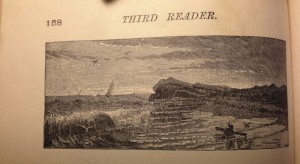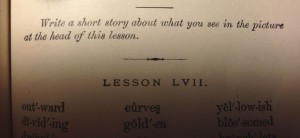
When a teacher makes the decision to bring art materials into the classroom and actually devote precious writing time to making art, that teacher is showing two things: 1. courage, and 2. a clear understanding of what makes a good writer. Susan Sontag said, “A writer, I think, is someone who pays attention to the world.” We ask children to use “visual imagery” in their writing on a daily basis. We tell them to “paint a picture with words.” The one thing we often forget, however, is how abstract words are for children, and how little experience they actually have with writing them down.
Words are a second language to all of us, if you consider the pictures in our minds to be our first language. When I ask you to remember your favorite childhood toys, do you picture the words “slinky” and “Legos?” More likely, you picture a silver coil climbing down the steps, and multi-colored blocks snapping together. As adults, we barely notice the steps we take to describe the pictures in our heads with words. But for children, the task of translating what they are thinking about into words is a challenge. Add to that the added task of forming the letters and sounding out the spelling, and you are asking for a lot of invisible steps to be taken.
Allowing time for making pictures in the writing classroom gives students – and teachers – the opportunity to see what they want to write. This provides opportunities for building vocabulary (“What do you call that color?” “What time of day is this taking place?” “Will you write about that moon?”). It also invests the students in their work, so that they desire success. It’s not always easy to get a student to describe what she wants to write, but ask her to describe her drawing and it is a different story. The time a teacher invests in allowing students to draw (before – not after – writing with words) is more than made up for when the students’ words flow more easily and confidently. Drawing loosens up the inhibitions, opens the lines of communication, and gives the student a voice.

“In my picture I see a yellow spider resting on a cool leaf. The leaf touches the moonlight and the stars. The wind dancing with the sky suddenly dies down into a cool winter breeze. Good night sleeping yellow spider.”






